Coupling agents and adhesion promoters represent a group of specialty bifunctional compounds that can react chemically with both the substrate and the adhesive. The term "coupling agent" refers generally to additives that work on fillers and reinforcements within a resin matrix to improve properties such as dispersion stability, viscosity, etc. In this case, the primary substrate is the filler or reinforcement. The term "adhesive promoter" generally refers to a material that can be incorporated into an adhesive formulation or as a surface primer to enhance adhesion at the joint interface. Very often the same materials can function as both "coupling agents" and "adhesion promoters".
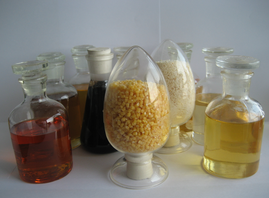
The most well known of these compounds is the organofunctional silanes. These have been used extensively as internal additives and primers for adhesives and sealants to improve adhesion, compounding properties, and as a crosslinking agent. Organofunctional coupling agents (including titanates, zirconates and aluminates) are another group compounds that also perform as coupling agents and / or adhesion promoters. Titanate is much popular than both zirconate and aluminate in organometallic coupling agent family, hereinafter we will always list titanate when we illustrate their chemical theory and application. The major application for organofunctional coupling agents have been as coupling agent additives to improve the dispersion of fillers resulting in enhanced physical, compounding, and application properties. However, they have also been used as adhesion promoters to enhance adhesion to a substrate.
Titanate
(RO)-Ti-(OXR'Y)3
Silane
(RO)3-Si-(-R'Y)
Organometallic titanate compounds have a covalent bond directly between titanium and carbon or indirectly to carbon through another atom, most commonly oxygen. The most common organometallic titanate compounds have 4 oxygen bridged bonds to carbon and are referred to titanate esters.
The primary step in their production is the stepwise reaction of titanium tetrachloride with an alcohol.
TiCl4 + 4ROH ⇋ (RO)4Ti + 4HCl
Based on (RO)4Ti we could get more downstream titanate ester compounds via transesterification reaction, most organometallic titanates are produced in this way.
Organometallic coupling agent and silane coupling agent have different center atom, Ti(Zr, Al) and Si and some interesting difference of their application and performance:
Organometallic Coupling Agent
Silane Coupling Agent
Mechanism
Mostly physical bond like covalent, VDW force, hydrogen
Mostly chemical bond
Suitable Resin
Both thermoplastic and thermoset resin
Thermoset resin highly preferred.
Suitable Filler
Also effective on fillers without hydroxy group like carbon black, graphite, barium sulfate
Silica, siliceous and other fillers which have hydroxy group on their surface
Influence to the final product
Mostly improve the flexibility
Mostly improve the strength and hardness
Coupling agents or adhesion promoters usually consist of molecules with short organic chains having different chemical composition on either end of the chain. On one end is the organofunctional group that is particularly compatible with the given adhesive resin. At the other end of the chain is an inorganic functionality that is especially compatible with a given substrate or filler.
These materials, therefore, act as a chemical bridge between the adhesive resin and the substrate or filler. Coupling agents were first used to treat glass fibers and other fillers before they are incorporated into liquid resin to make composite materials. Silane coupling agent have long been used to improve the chemical bond between a variety of thermosetting resins and glass fibers and other substrates.
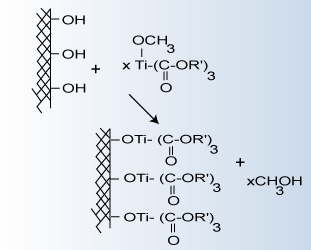
Organometallic coupling agents, based on titanium, zirconium or aluminum, have been shown to offer a similar compatibility with glass fibers and a wider compatibility with graphite or aramid fiber than the silane coupling agent. Other surfaces that show little or no response to silane coupling agent but are compatible with organometallic coupling agents include calcium carbonate and boron. Titanates and zirconates have also showed significant improvement in wetting of the filler and substrate and in improving the impact strength and chemical resistance of final polymeric system. Improved process rheology has also been shown in highly filled systems.

According to the research of Salvatore J. Monte from Kenrich, organometallic coupling agents (titanate, zirconate and aluminate) have Six Functions:
(1) Coupling Function (RO)n: hydrolysable group or substrate reactive group with surface hydroxyl or protons, it is mostly isopropoxyl or neo alkoxyl group for most titanates, zirconates and aluminates. Function (1) concerns itself with filler/fiber substrate reaction mechanisms, while functions (2) to (6) are polymer/curative reactive. Organometallic coupling agent utilizes proton coordination on non-silane reactive substrates such as CaCO3 and carbon without needing water of condensation as with silanes.
(2) Catalysis Function (Ti, Zr, Al) : tetravalent titanium, zirconium or aluminum. The Ti-O (or Zr-O, Al-O) bond is capable of disassociation allowing transesterification, transalkylation and other catalysis mechanisms such as post-reactor Repolymerization or Copolymerization or Regeneration of recycle or regrind. Silane Si-C bonds are thermally stable and inert. Titanates will “flexibilize” an unfilled polymer by the addition of just 2 to 4 parts of the titanate molecule per 1,000 parts of the polymeric macromolecule.
The catalysis effect is shown to be permanent and recyclable. Coupling agent liquid, powder and pellet forms; dosage; data and applications methodology in compounding, injection and blow molding unfilled and filled (micron, sub-micron & nano) thermoplastics and fiber reinforced thermosets and elastomers have been discussed in too many papers and patents.
(3) Hetero Atom Function (X) : Binder functional groups such as phosphato, pyrophosphato, sulfonyl, carboxyl, etc. impart intumescences, burn rate control, anticorrosion, quaternization sites, disassociation rate/electron transfer control, etc.
(4) Thermoplastic Function (R’) : thermoplastic functional groups such as: aliphatic and non-polar isopropyl, butyl, octyl, isostearoyl groups; naphthenic and mildly polar dodecylbenzyl groups; or aromatic benzyl, cumyl phenyl groups optimize bonding as determined by polarity of the polymer or substrate.
(5) Thermoset Function (Y) : thermoset functional groups such as acryl, methacryl, mercapto, amino, etc. react
with various curatives to increase x-link network density or provide a UV/EB function.
(6) Hybrid Function -R’Y)4-n : mono, di or tri-organofunctional hybrid titanates are possible, such as a titanate containing 1 mole of an aliphatic isostearoyl ligand (function 4) and 2-moles of acryl ligands (function 5).
Organometallic adhesion promoters / coupling agents typically can provide a dual function of improving processing and improving adhesion. Titanates have been used predominantly to modify the viscosity of filled thermoset and thermoplastic systems. It has been shown that a small percentage of titanate in a heavily filled resin system can reduce the viscosity significantly, thus, titanate adhesion promoters allow higher filling of particulate matter to either improve properties or lower the cost of the systems without having a negative effect on the viscosity. Improved bond strength even to halocarbon surfaces and improved hydrolytic stability are also claimed. 3
However, organic titanates, zirconates and aluminates have been found to provide several other important functions as additives for organic adhesives and sealants. At least eight primary functions have been proposed.
Organic titanates, zirconates and aluminates can be used as:
1. catalysts for manufacture of adhesive and sealant prepolymer
2. adhesion promoters
3. wetting agents
4. surface protection
5. water scavengers
6. crosslinker
7. catalyst for crosslinking
8. thixotropic agents.The mechanisms and processes by which the organic titanates, zirconates and aluminates provide these important functions are summarized in the table below:
Function
Effect
Use
Catalysis
Act as Lewis acids to catalyze reactions.
Manufacture of acrylates, methacrylates, polyamides, polyester, polyurethanes, epoxies, etc.
Adhesion promotion
Improved adhesion between unreactive inorganic or organic substrates and resin matrix.
Adhesion promoter in form of a primer solution or as a polymer additive. Sometimes used with organosilanes.
Wetting agent
Surface tension can be reduced and a better wetting of the polymer is achieved.
Used as a primer or as a polymer additive.
Dispersing agent
Improved dispersion of pigments or fillers, viscosity reduction, increase of filler content, better end-properties.
Pretreatment of fillers or pigments or as a polymer additive.
Surface protection
A thin protective metal oxide layer can be formed on the surface of organic or inorganic substrates.
Priming of the substrate by solutions of titanium / zirconate or by partial hydrolyzing and heating or chemical vapor deposition.
Water scavenger
Acts as a water scavenger or drying agent by forming polymeric titanium oxide hydrate or other compounds.
Used as an additive in silicone or polyurethane sealants (0.5-5% by weight).
Crosslinking
Can react with the OH or COOH groups of polymer resulting in crosslinking.
Curing, improvement in temperature and chemical resistance, gel formation.
Crosslinking catalyst
Through the choice of the appropriate metal (Ti or Zr) and chelating agent the reactivity can be controlled.
Increased reaction rate in silicone, polyurethane and epoxy systems.
Thixotropic Agent
Undergo reversible crosslinking reactions via hydrogen bridge bonds forming a gel structure.
Added as the last ingredient in the formulation. Mainly used for water-based acrylics.
The use of organic titanates, zirconates and aluminates for surface modification is based on their ability to hydrolyze to a coating that is very thin, amorphous, and primarily inorganic. The properties of this film depend on the type and amount of organometallic coupling agent used, the chemistry of the organometallic, and the processing properties used to apply the coating. These coatings modify the surface of the filler or substrate to provide the following unique properties.
· They promote adhesion of adhesives and coatings to glass, metal, and plastics.
· The organometallic interface improves dispersability of pigments and fillers in aqueous and non-aqueous systems and reduces viscosity.
· It can provide scratch-resistant and reflective properties to glass.
· It can modify frictional characteristics of the substrate.
The best performance is obtained when the substrate contains functional groups with active hydrogens. However, the substrate can be reactive or unreactive inorganic materials or even organic polymers that have been activated by corona, plasma, or flame pretreatment. The organic titanate or zirconate can be incorporated as an additive into an adhesive, sealant or coating at a concentration of about 0.5-3%. It can also be applied as a primer via a 0.5-5% solution in solvent such as isopropanol. Synergistic effects can also be achieved when the organic titanates or zirconates are blended with organofunctional silanes.
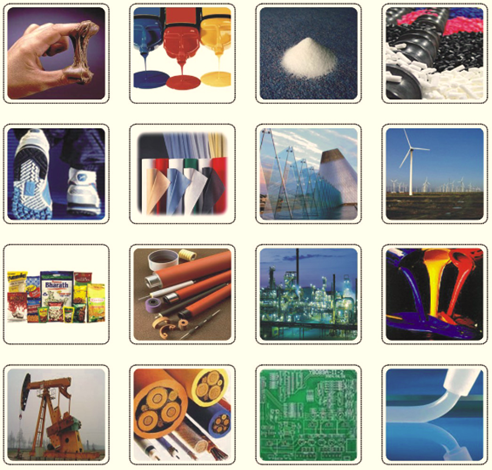
Organic titanates, zirconates and aluminates, as additives or primers, have been noticed to improve the adhesion adhesives or sealants to polyethylene terephthalate film, polyoflefins, polyimides, nylon, polyurethanes, epoxies, phenolics and silicones. Organmetallic compounds have also been used as primers to promote the adhesion of silicone rubber adhesives to metal, plastic, glass, ceramics, concrete, wood, and fabrics. Titanates have also been used as primer coatings to improve the adhesion of resins and inks to polytetrafluoroethylene surfaces. In coatings that contain polytetrafluoroethylene, titanates are added to improve adhesion to a variety of substrates and to improve lubricity, water and oil repellency, and acid and solvent resistance.
Titanates can also be used to cure polysiloxanes for coatings with excellent adhesion, water repellency, and resistance to heat, staining, and abrasion. They can also be used to cure a broad range of epoxy resins. Titanate cured epoxy coatings are claimed to exhibit improved adhesion as well as enhancement in flexibility, chemical resistance, electrical resistance, and thermal stability. Organic titanates are also used to crosslink acrylic and methacrylic resins that are widely used as coatings and sealants.
Organometallic coupling agent is a high efficient additive, always a very small dosage like 0.1~2.% can get a outstanding effective. But using it in a right way is very important.
Two Application Principles for Thermoplastics Melt Mixing
The physics of mixing is as important as the chemistry of coupling. Two principles govern the applications art of coupling agents: uniform distribution before the polymer melt phase for uniform coupling/catalysis and high specific energy input during the polymer melt phase for maximum shear/work energy for dispersion so that coupling at the filler interface and catalysis in the polymer interphase are made complete.


Titanates coated
Without titanates
Often times, poor mixing methodology can defeat the best polymer filler reinforcement additive compound design.
Uniform Distribution – Before the Polymer Melt Phase or Before Filler Contact for Uniform Coupling and Catalysis
Subject organometallics work on a catalytic principle at stoichiometric levels of 0.1 to 2.0 parts additive per thousand parts polymer and 0.5 to 0.7% by weight of most fillers.
As stated, in room temperature liquid waterbased or high solids polymer systems, it is best practice to add the coupling agent into the liquid phase just prior to addition of the filler or particulate to be coupled. The titanate must be soluble directly into the organic or water phase or able to be cosolvated or emulsified.
Coupling in atomic monolayers may take place on the surface of a particulate in both the organic and water phase. In order to effect atomic monomolecular level coupling, the titanate or zirconate must be solubilized in the organic (solvent, plasticizer, polymer) phase or finely emulsified into the water followed by addition of the particulate or reinforcing fiber. If the organic phase has a high molecular weight, then sufficient shear and high mixing torque is needed to assure titanate distribution.
Since titanates are transesterification catalysts and are used as catalysts in the synthesis of esters such as DOP, it is best practice to dissolve them into an ester plasticizer just prior to use so as to keep residence time minimized to avoid side reactions that diminish effectiveness.
In thermoplastic and thermoset melt systems, the coupling agent must be dispersed as thoroughly as possible throughout the unmelted polymer or polymer composite materials before the onset of melting. During melting, catalysis is initiated as the titanate or zirconate solvates into the polymer organic phase for reaction with polymer ligands and coupling to the filler/fiber interface.
The concern with localization and physiabsorption of the coupling agent on the filler or fiber which results in whole segments of uncoupled particulate surfaces, as well as over and under catalysis of the polymer, is largely overcome by using masterbatches of the coupling agent. A simple rule is to use like coupling agent form to like polymer physical form, i.e. liquid to liquid, powder to powder and pellet to pellet. Therefore, an organosoluble liquid coupling agent should be used for solvent or high solids liquid polymers, a quaternized or emulsifiable grade of coupling agent for water based emulsion polymers, a 65% active coupling agent masterbatch for powder polymer systems such as thermoset epoxy powder coatings, rigid PVC composites and elastomers, and a 20% active coupling agent masterbatch for pelleted polymer systems.
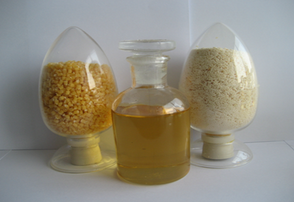
Titanate TCA-L12 with its powder masterbatch DLC-L12 and its pellet masterbatch MB-L12.
The pellet form is the simplest and best for the typical thermoplastic injection, blow molding or extrusion-processing set-up. Powder forms of the coupling agent work best in high shear dry blend mixers such as a Henschel and batch mixers such as double sigma blade or internal mixers or 2-roll mills because they are easier to weigh out and avoid localization caused by poor mixing techniques, sticking to the ram or mixer walls. The powder form can also be fed gravimetrically to the throat of an extruder.
Specific Energy Input During the Polymer Melt Phase
Once the polymer begins to melt, work energy through mechanical shear creates the required intimate polymer/catalyst (coupling agent) mixing. The area under the power curve formed by a plot of torque vs. time is a measurement of the work energy or shear on the polymer/catalyst matrix. The most efficient polymer mix cycles generate peak torque (AMPS) in a short time. Torque is controlled by temperature, rpm’s and backpressure or plasticizer/solvent/water letdown. High torque creates high polymer shear rates. Polymers are non-Newtonian in flow and their melt viscosity decreases asymptotically with increasing shear. Under high shear rates, polymers exhibit the lowest viscosity with the least amount of rheological variation as compared to greater polymer viscosity variation at lower shear rates - i.e. high shear rates give reproducible results. Most polymers (except for heat sensitive PVC) are not damaged by higher shear. Low shear rate melt indexers are not the way to measure the effect of subject additives. Use torque readout instrumentation that plots rheological effects over a wide shear rate range.
Successful use of titanates and zirconates, or any very active additive used at low levels, therefore requires the optimum specific energy input. Lower temperatures, increased back pressure, higher rpm’s and other changes in the compounding conditions are necessary to compensate for the rheological changes the coupling agent induces into the compound. Remember, the compounding device – whether it’s a single or twin screw, intensive or continuous mixer, a two-roll mill, a Cowles dissolver or high shear mixer – becomes in effect a Reactor for coupling and catalysis mechanisms. It’s the interfacial shear that is controlled by the system’s viscosity that does the work -- and the geometry of the compounding machine just facilitates achieving the necessary work energy. You can’t just let the Banbury or twin screw compound without monitoring torque or amps. If you are run control compounds and titanate containing compounds at the same conditions – you are not practicing good science, but simply comparing “apples to oranges” as it relates to specific energy input. Mixing the control and titanate containing compounds to equivalent work energy is good science.
Most qualified polymer compounders know that the best formulation can produce poor results because of poor mixing. PVC, thermoplastic and rubber custom compounders – and also coatings, inks adhesives and sealants chemists – are alert to mixing art techniques such as two passes, solvent let downs, solubility parameters, upside down mixing, predispersion of critical ingredients, ram pressures, back pressures, increased rpms, blade and screw designs, mixing element inserts and all other manner of approaches that seek to impart the optimum amount of mechanical shear work energy to the interface of all the ingredients in the matrix.
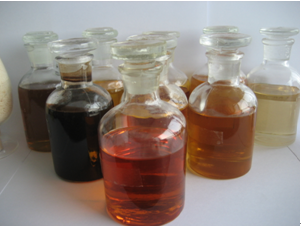
Some common compounding mistakes are: add the liquid titanate with other compound ingredients in a plastic bag; dump the liquid coupling agent on top of the other ingredients in a static bowl; add the liquid coupling agent in a ribbon blender or a Banbury. Good practice is to: before the melt phase –spray apply the liquid titanate (diluted) or dropwise add the liquid titanate to a fluidized bed of the powder ingredients in a high shear mixer such as a Henschel, Papenmeier, Littleford Lodige, Patterson Kelley V Blender with intensifier bar and other such blenders typically used by PVC compounders, to practice the first principle of uniform distribution. It is good practice to add the coupling agent into the other ingredients in a plastic bag and shake vigorously if the coupling agent is in a masterbatch DLC powder form or MB pellet form. Again, a simple rule of thumb is: “liquid additives into liquid polymer systems, powdered additives into powdered systems and pelleted additives into pellet systems.”
Dosage Determination Principles
Optimum dosage is determined by the materials used in the compound. An obvious statement, but, then why do so many investigators choose 1.0% or 1 phr coupling agent dosage as a single data point to determine efficacy? In addition, unlike silanes, titanate or zirconate dosage is often determined by the Function 2 catalysis effect rather than the Function 1 coupling effect. Most of the titanate literature points to 0.2 to 0.6% as an optimum dosage for most unfilled formulations? A 3-data point ladder study is much more useful for all unfilled and filled polymer formulations.
For example, one test shows how a high pigment to binder ratio of 80% Ferrite in Mineral Oil shows 0.5% by weight of Ferrite to be the optimal loading.
Amount Based on Organic Polymer
A simple test devised to demonstrate the repolymerization effect on low molecular polyethylene wax (AC 617A – Allied Signal) was to dilute one part of the PE wax with three parts of mineral oil. Mineral oil is a convenient C20 aliphatic low molecular weight room temperature model for polyethylene. The resultant 1:3 blend had a viscosity of 22,400 cps. The addition of 0.1 wt. % to the blend of zirconate ZCA-12 increased the viscosity to 5,000,000 cps, 0.2 wt. % to 7,000,000 cps, and 0.4 wt. % to 1,800,000 cps thereby indicating 0.2 wt. % was optimum for this system. Most polymers give balanced property effects at 0.2 to 0.6% titanate dosages.
Amount Based on Inorganic Pigment
The amount needed to form an atomic monolayer of coupling agent is pigment surface area dependent and generally lies between 0.2 to 0.5 to 0.7% by weight of pigment. Even nanoclays and fine surface area silicas and blacks show some significant dispersion improvement at 0.5% dosage.
Consistent with the concept of coupling and catalysis, although 6% titanate may appear to be a large dosage from a coupling viewpoint, the low levels of nanoparticulate used result in often ideal catalytic levels of titanate dosage in the 0.1 to 0.4% by weight of polymer range.
Although surface area is an obvious dosage determinant, the way a pigment or filler is produced can also determine dosage. For example, an ultramarine blue pigment with a surface area of 3m2/g required 0.35% titanate, while the same pigment having a surface area of 1m2/g required 3.2% titanate. The different dosage requirement was not all surface area dependent, but mostly caused by the different surfactant chemistries used in the water slurries of the pigment before drying.
The amount of coupling agent will even vary with time with vast differences in viscosities depending on whether the viscosity was measured at room temperature immediately after mixing, or 1-hour, or 1-day or 28-days later. This variability is due to the pore velocity (the speed or time it takes for a fluid to penetrate and wet the additional internal inorganic surface area created by its capillary pores as determined by the geometric three-dimensional nature of the pigment) and other long-term interactions with the polymer interphase.
Generally, 1 to 5 micron mineral fillers require 0.35% to 0.70% titanate by weight of the filler.
Amount Based on Combined Inorganic and Organic
A good dosage/data evaluation point would be that which is obtained by the calculation of the combined amount of coupling agent needed to form an atomic monolayer on the filler/reinforcement surface and the amount needed for optimum repolymerization effects on the polymer interphase. For example, the optimum dosage for a CaCO3 filled PVC may well be that obtained by the combined weight of 0.5 wt% of the filler portion and 0.2 wt% of the PVC portion. If Henschel pretreatment is employed, dilution of 1 part coupling agent in three parts plasticizer will enhance significantly the uniformity of coupling agent distribution. Since titanates are transesterification catalysts, they should not be added to the ester until just before mixing is started. Airless spray gun application to a dry fluidized bed of compound ingredients will minimize diluent requirements. A discussion follows on the necessity to dilute titanate when pretreating Mg(OH)2. Similar tests with ATH, CaCO3 and other fillers showed that dilution with plasticizer or mineral oil was not necessary.
Mixers for pretreatment
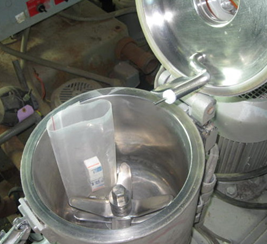
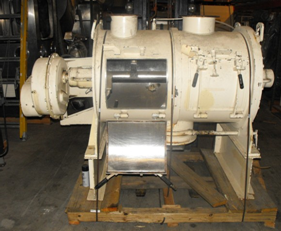
Henschel mixer
Littleford Lodige mixer
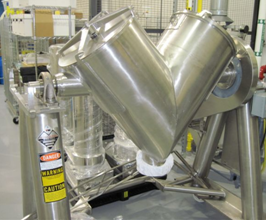
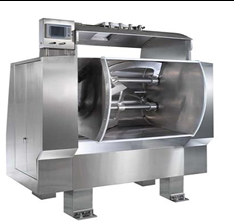
Patterson Kelly V mixer
Sigma mixer
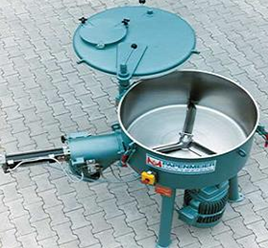
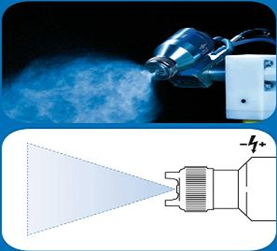
Vertical mixer
Airless Spray Gun
.
Choosing the right organometallic coupling agent is not an easy job, it is mostly based on the experience and the know-how. Organometallic titanate, zirconate and aluminate are not like organofunctional silane; most of them have using for thermoplastic resin and will not form a strong chemical bonding. We can find too many test & application reports of organometallic coupling agent in the technical paper, patents. However besides that we are pleased to share our learning as below for your information.
Firstly we make a classification of the organometallic coupling agent, each class have the same chemical structure and property.
Type
Grade
Fatty Acid Titanates, Zirconates, Aluminates
TCA-KTTO, TCA-KTTS, TCA-KTTT, TCA-K12, TCA-L01, TCA-L12, ACA-K30, ZCA-N01, ZCA-N12
Pyrophosphate Titanates, Zirconates, Aluminates
TCA-K38S, TCA-L38, ZCA-N38
A,B Ethylene Chelate Titanates, Zirconates, Aluminates
TCA-K238S
Quat Titanates, Zirconates, Aluminates
TCA-K238T, TCA-L38J
Coordinate Titanates, Zirconates, Aluminates
TCA-K41B, TCA-K46B, TCA-K55, ZCA-N55
Amino group Titanates, Zirconates, Aluminates
TCA-TE, TCA-K44, TCA-K97, TCA-L44, TCA-L44, ZCA-N44, ZCA-N97
Dodecylbenzenesulfonate Titanates, Zirconates, Aluminates
TCA-K09S, TCA-L09, ZCA-N09
Titanate, Zirconate, Aluminate Chelates
TCA-AA, TCA-AA75, TCA-AA65, TCA-AA105, TCA-AA95, TCA-IAM, TCA-PI2, TCA-IA10, TCA-DC, TCA-IBAY, TCA-BEAT, TCA-TE, ACA-EAA1, ACA-AA1, ACA-AA2, ACA-AA3
Titanate, Zirconate, Aluminate Powder Masterbatch
DLC series like DLC-L38, DLC-K38S, etc.
Titanate, Zirconate, Aluminate Pellet Masterbatch
MB series like MB-L38/LLDPE, MB-K38S/LLDPE
The below decision tree is for the regular choosing route for plastic and coating application.
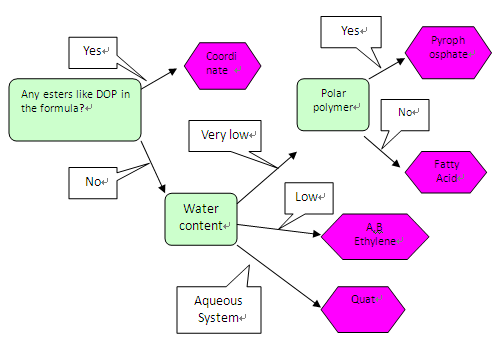
Titanate coupling agents have an advantage in their relative ease of manufacture and molecule building, thus providing specific function for a wide scope of composite applications. Titanate coupling agent is the most part of the organometallic coupling agents family owing it its competitive price and numerous grades.
However, titanium acts as a reducing agent in the presence of peroxide. Peroxide free radicals are thereby eliminated and cure efficiency is diminished as Ti4 is reduced to Ti3. On the other hand, Zr+4 is an activator for peroxide resulting in a frequently desirable acceleration of peroxide and air-based cures – the basis for many thermoset and coatings systems.
Since zirconates are not as active Lewis acid as titanates, they have less of a catalytic effect in urethane systems and, therefore, may prove useful as cure-rate-independent rheology modifiers.
Both titanate and zirconate coupling agents do not interact with hindered amines (light stabilizers and/or antioxidants – HALS) under common operating conditions. However, titanates may have undesirable color formation effects with phenolic-based additives such as: heat & light stabilizers (antioxidants) used in thermoplastics, alkyds and urethanes. Phenolics are also used as chain stops in polyester systems, urethanes, alkyds and acrylics. Zirconates in general are not color body producers in contact with phenols other than nitrophenols.
Zirconium’s (Zr-40) higher molecular weight than silicon (Si-14) or titanium (Ti-22) appears to lend zirconates to high temperature applications where optimum thermal and color stability is required. Therefore, although zirconates are somewhat higher in cost, they fill a functional niche.
Aluminate coupling agent is the new one for the organometallic coupling agent family, it has the advantage of low price raw material and low price. Dislike titanate and zirconate, aluminate is always has a light color which is very important for some coating and plastic application. However aluminum is trivalent, available commercialized aluminate grade is not too many.





